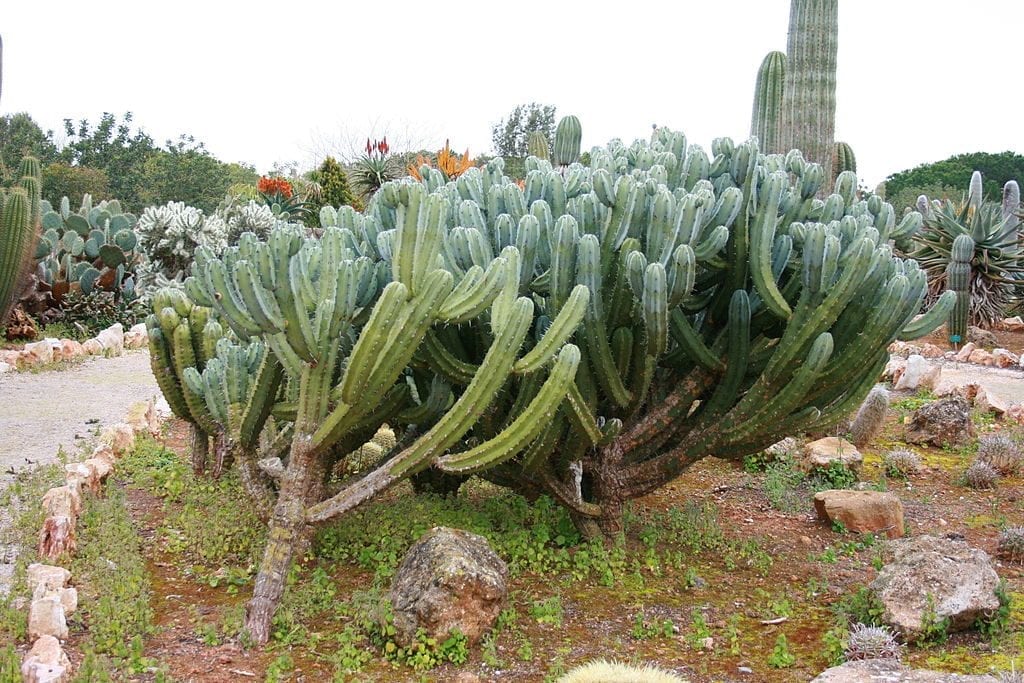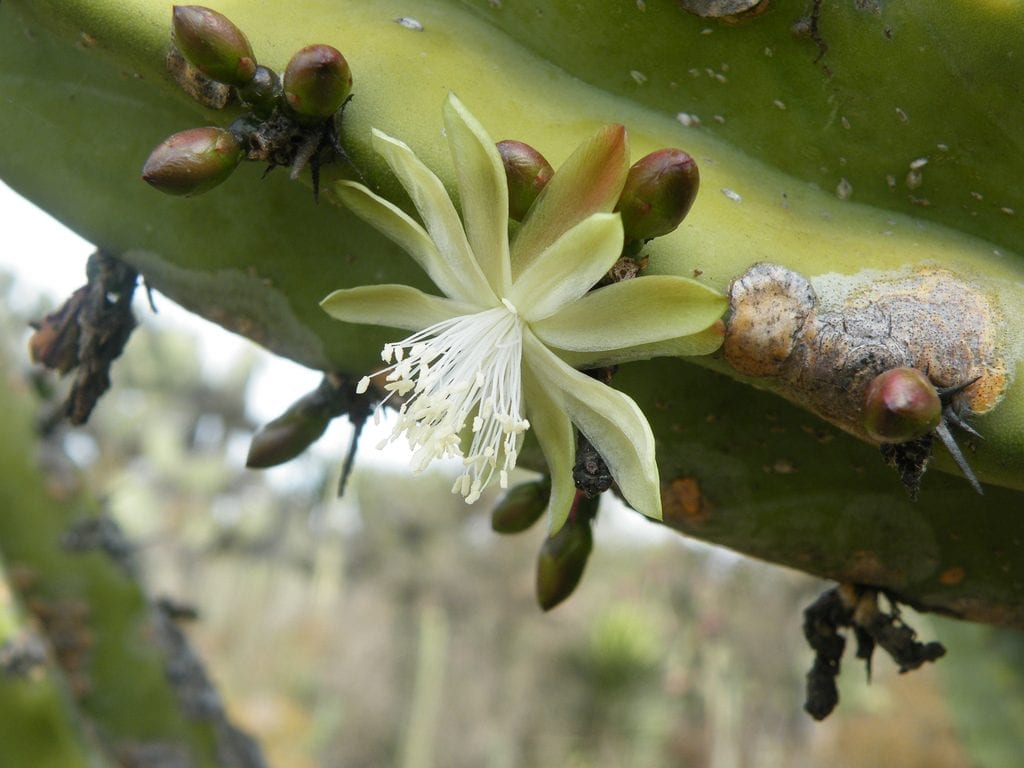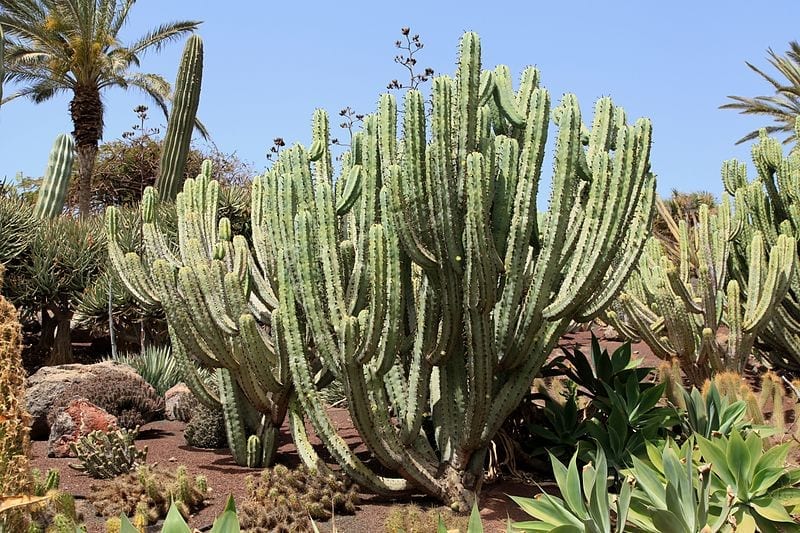
Image - Wikimedia / Frank Vincentz
El garambullo It is one of the cacti that we can most easily find in nurseries, and not because it is common (which it is), but more than anything because it is one of those that grows faster without hardly caring for it.
In addition, it has many uses: both ornamental, medicinal or, of course, as a protection plant due to the sharp thorns it has. But, How to keep it healthy?
Origin and characteristics

Image - Flickr / Amante Darmanin
The garambullo, whose scientific name is Myrtilocactus geometrizans, is an endemic cactus of Mexico. It grows as a shrub or a very branched and candelabra-shaped small tree 2-7 meters high.. The stems are between 6 and 12cm in diameter, have between 6 and 8 ribs and are bluish in color. From the areolas sprout a central spine 1-3cm long and gray in color, and others that are radial that measure 5-8cm long.
The flowers are axillary, measure up to 8,5cm in diameter by 3cm wide, and are yellowish-green. The fruit is globose, dark red, purple or bluish in color and has some weak spines. Its pulp is edible, purple in color. And the seeds are oval, black, and 1,2 to 1,7mm long by 1 to 1,5mm wide.
Uses
Apart from being used as an ornamental, garambullo has other uses:
- Edible: with the fruits gelatins, liqueurs, jams, and waters are prepared.
- Firewood: the dried plant is an important source of firewood in rural communities in its natural habitat.
What are their cares?

Image - Wikimedia / Frank Vincentz
If you want to have a copy, we recommend that you provide it with the following care:
- Location: the garambullo is a cactus that must be outside, in full sun.
- Earth:
- Garden: grows in well-drained soils.
- Pot: universal growing substrate mixed with perlite in equal parts.
- Irrigation: 2 to 3 irrigations per week will be sufficient during the summer and every 4-5 days the rest of the year.
- Multiplication: by seeds and cuttings in spring or summer.
- Planting or transplanting time: in spring, when the risk of frost has passed. If it is potted, transplant to a larger one every 2 years.
- Rusticity: from experience I can tell you that it resists well up to -2ºC if it is an adult and acclimatized specimen, although ideally it should not drop below 8ºC.
What did you think of this cactus?
It is an excellent cactus, especially for its fruits, where to get cuttings?
Hello Esteban.
We recommend you visit a nursery in your area, or ask at an online succulent store. They will surely be able to help you.
Regards!
Hello, it's beautiful, I have one that is 10 years old and it has not blossomed yet, you know why? Thanks
Hi Manolo.
Do you have it on the ground or in a pot? If it is in a pot it may be that it lacks space if it has been in it for more than 2 years.
Although it is likely that the only thing that happens is that it needs more time to bloom 🙂. You can fertilize it with a cactus fertilizer, following the instructions on the package, to help you.
Regards!